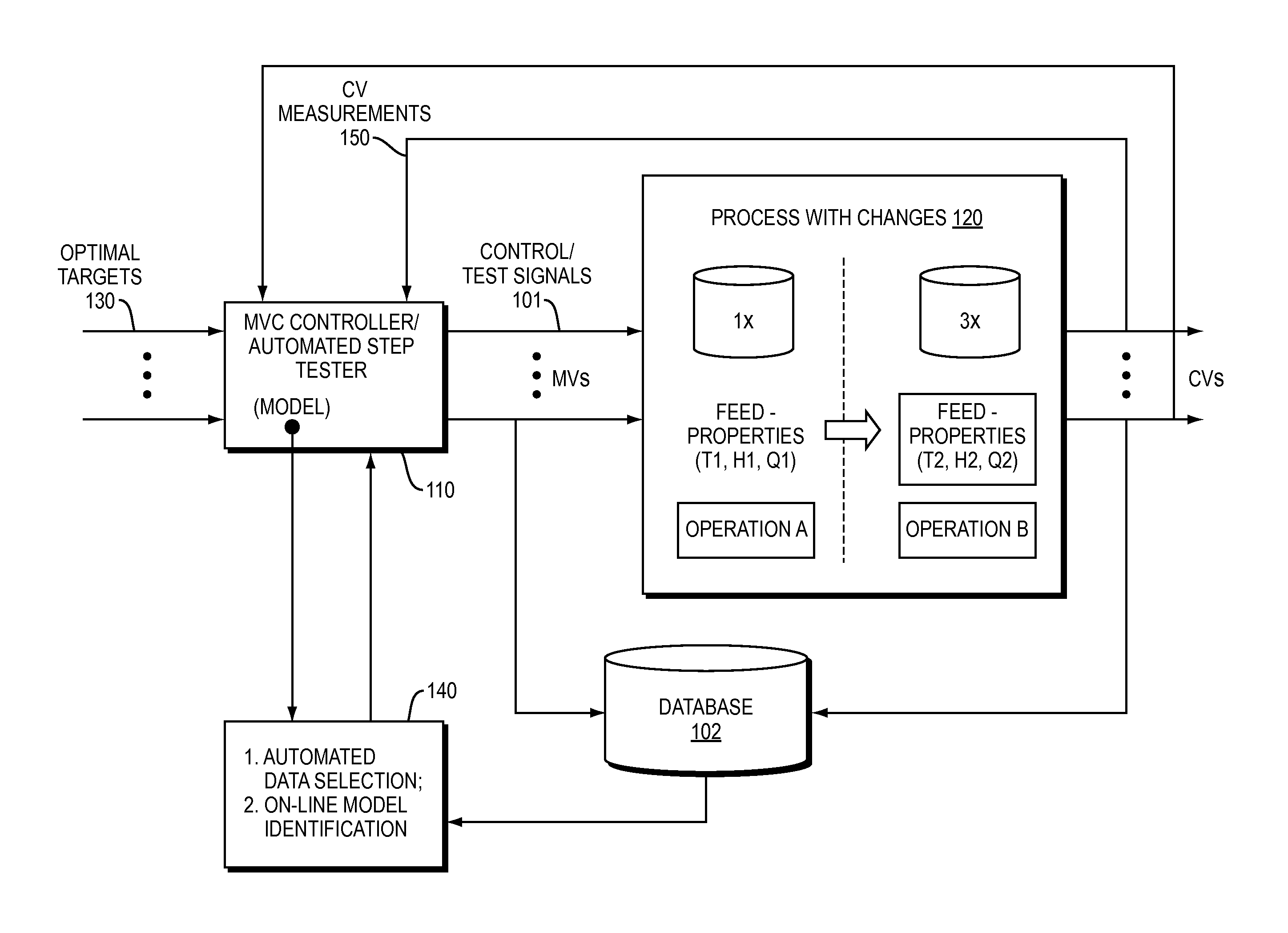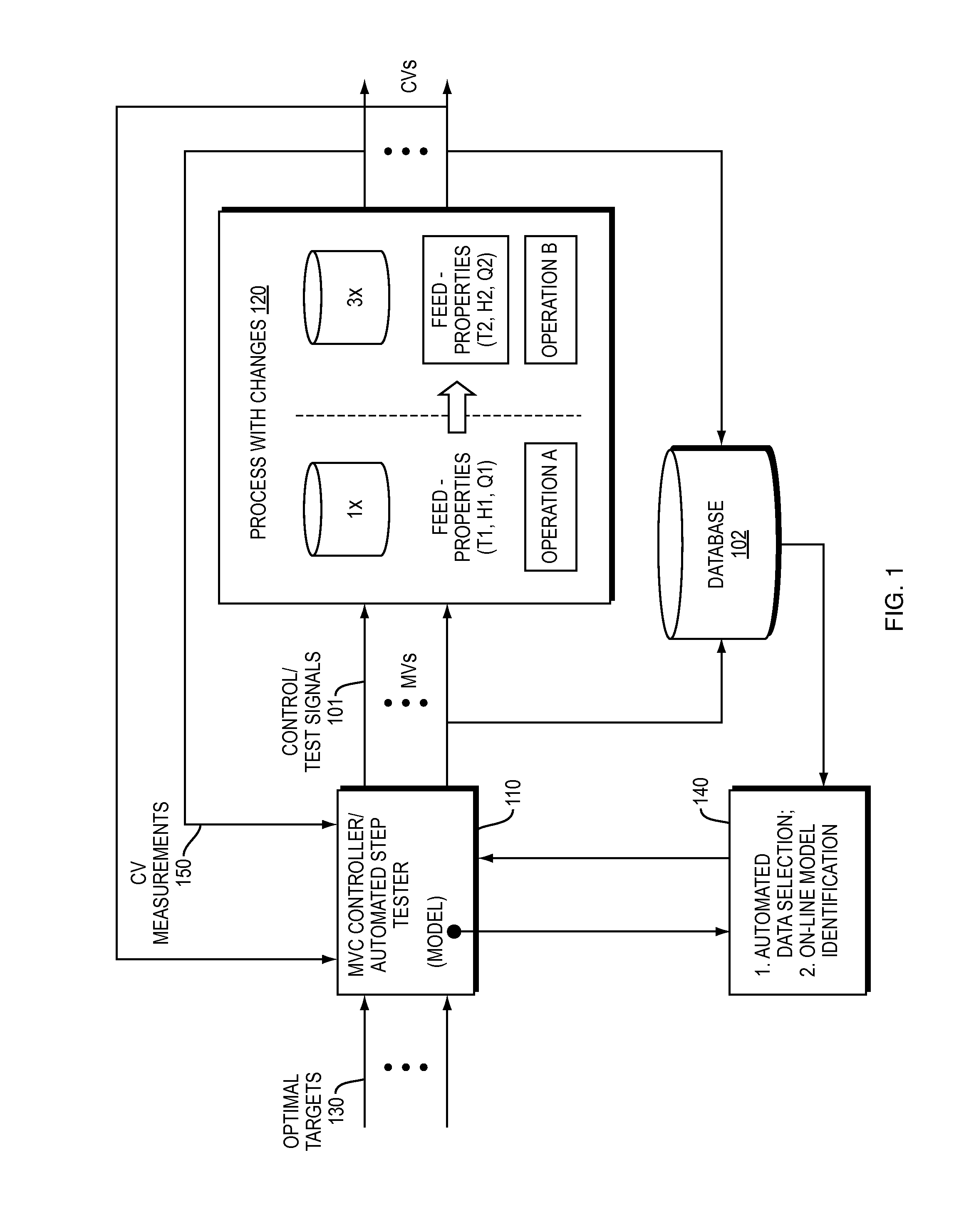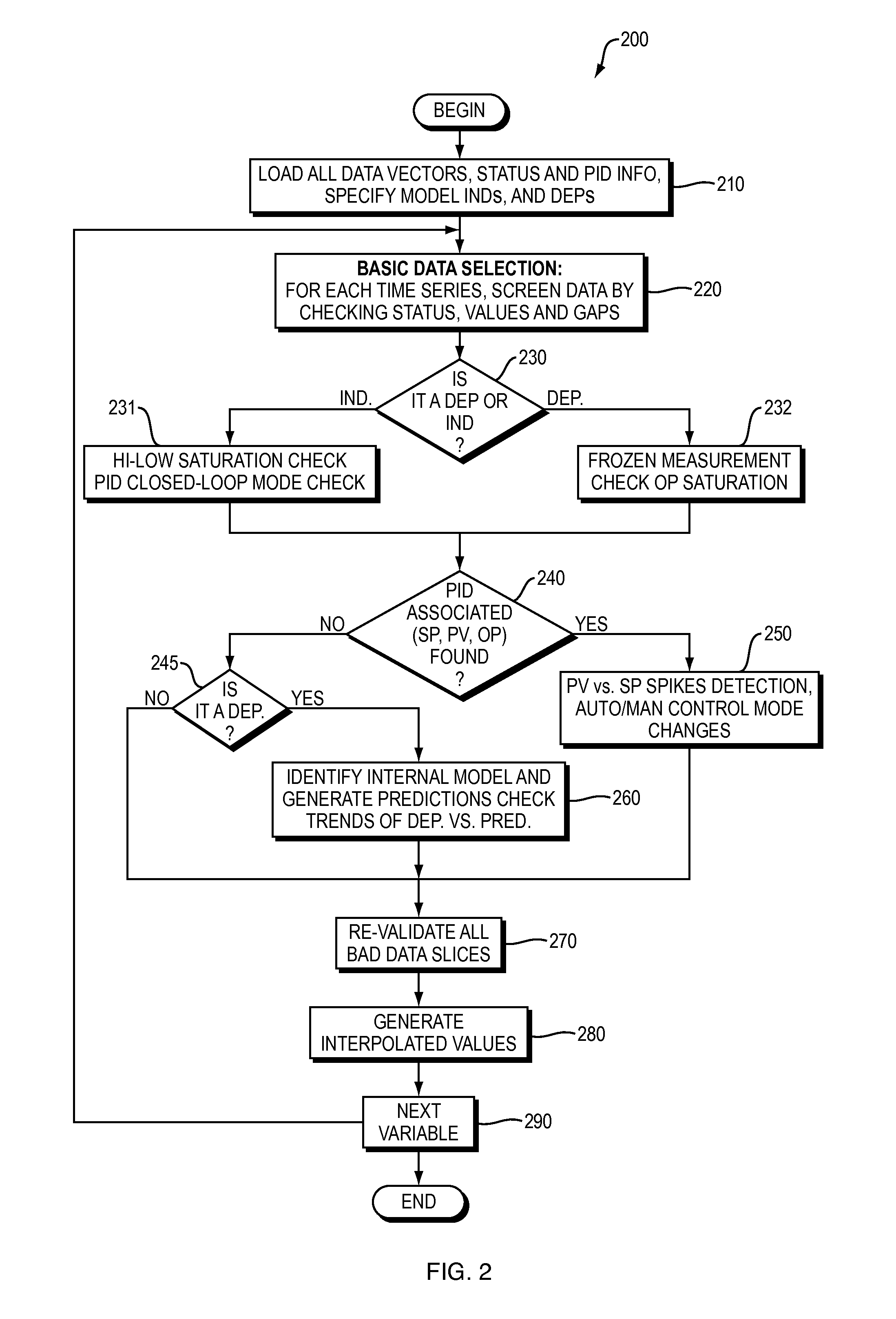Apparatus and Method for Automated Data Selection in Model Identification and Adaptation in Multivariable Process Control
a technology of model identification and process control, applied in adaptive control, process and machine control, instruments, etc., can solve the problems of control performance, loss of benefits, control performance degradation, etc., and achieve the effect of maximizing the overall data usage and minimizing data loss
- Summary
- Abstract
- Description
- Claims
- Application Information
AI Technical Summary
Benefits of technology
Problems solved by technology
Method used
Image
Examples
Embodiment Construction
[0055]A description of example embodiments of the invention follows.
[0056]The teachings of all patents, published applications, and references cited herein are incorporated by reference in their entirety.
[0057]Embodiments provide expansion of model quality estimation and model adaptation in multivariable process control techniques described in related parent application (U.S. Patent Application Publication No. US 2011 / 0130850 A1 by Assignee). Embodiments can be configured and executed to screen and select required data for model quality assessment and / or model re-identification in the systems of the parent disclosure, while minimizing the intensive work on data selection and preparation commonly done by a process control engineer manually. Accordingly, the present invention provides an improvement over the prior state of the art.
[0058]Embodiments provide a new apparatus and method for screening and selecting plant test / operational data automatically for online or offline model ident...
PUM
 Login to View More
Login to View More Abstract
Description
Claims
Application Information
 Login to View More
Login to View More - R&D
- Intellectual Property
- Life Sciences
- Materials
- Tech Scout
- Unparalleled Data Quality
- Higher Quality Content
- 60% Fewer Hallucinations
Browse by: Latest US Patents, China's latest patents, Technical Efficacy Thesaurus, Application Domain, Technology Topic, Popular Technical Reports.
© 2025 PatSnap. All rights reserved.Legal|Privacy policy|Modern Slavery Act Transparency Statement|Sitemap|About US| Contact US: help@patsnap.com



